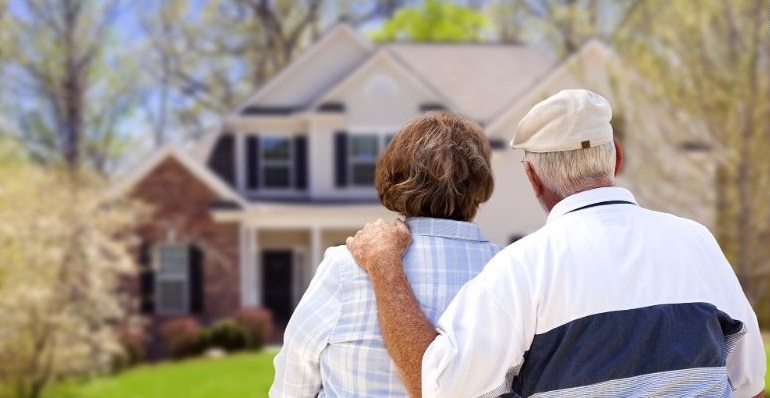Physical limitations due to aging can take a toll on older Americans wishing to stay in place

Older Americans wish to remain and age in their homes, but challenges such as physical limitations and the need to retrofit their homes are hindering them, according to new data from Freddie Mac.
A survey conducted by the company revealed that half of Americans aged 55 and up are facing obstacles, such as at least one physical limitation, if they want to remain in their own homes. Three quarters of Americans aged 75 and above share the same sentiment.
In addition, respondents aged 55 and up – 43 million of homeowners surveyed – wish to age in place, while Americans aged 75 and up are twice as likely to want to remain in their home.
"Nearly a quarter of all Baby Boomers are going to be faced with the financial realities of aging in place, which can range from a few hundred to thousands of dollars,” said Sean Becketti, vice president and chief economist at Freddie Mac. “Of course, the cost depends on the type and condition of the home.
Many older homes, such as many of the colonial-style homes common in the Northeast and Midwest, may not be good candidates for retrofitting. For some of them, aging in place until the bitter end may not even be a possibility. Like Bette Davis said, 'Old age is not for sissies.'"
When it comes to adapting to physical limitations while at home, retrofitting – or tweaking a home to readjust to physical limitations associated with aging – is the key, but even that can pose an obstacle for older homeowners.
Americans aged 55+ – who make up a quarter of the population or around 90 million people – are the key demographic for retrofitting homes. By 2050, the Census projects the number of Americans aged 55+ to grow to 136 million.
Right now, around 1.5 million households require some retrofitting, and by 2030 this will increase to 2 million.
Retrofitting can be expensive, and a major retrofit can be 40 times more expensive than the simple ones such as installing grab bars.
The Joint Center for Housing Studies made a list of the most crucial retrofits for aging homeowners:
• No-step entries. No need to climb steps to enter the main floor of the house.
• Single-floor living. A bedroom and full bathroom on the main floor of the house.
• Extra-wide hallways and doors. Wheelchairs require doors and halls with widths of at least 36 inches.
Standard doorways are only 28 to 32 inches wide.
• Accessible electrical controls. Controls that can be reached from a wheelchair.
• Lever-style handles on doors and faucets. To overcome the difficulty of turning traditional doorknobs and faucet handles.
Becketti said only 1% of existing housing stock has these retrofits, and less than 4% has at least three of these features.
Related stories:
Could Trump tax cuts cause another Fannie-Freddie bailout?
Congressmen: G-fees should be banned from use on federal spending
A survey conducted by the company revealed that half of Americans aged 55 and up are facing obstacles, such as at least one physical limitation, if they want to remain in their own homes. Three quarters of Americans aged 75 and above share the same sentiment.
In addition, respondents aged 55 and up – 43 million of homeowners surveyed – wish to age in place, while Americans aged 75 and up are twice as likely to want to remain in their home.
"Nearly a quarter of all Baby Boomers are going to be faced with the financial realities of aging in place, which can range from a few hundred to thousands of dollars,” said Sean Becketti, vice president and chief economist at Freddie Mac. “Of course, the cost depends on the type and condition of the home.
Many older homes, such as many of the colonial-style homes common in the Northeast and Midwest, may not be good candidates for retrofitting. For some of them, aging in place until the bitter end may not even be a possibility. Like Bette Davis said, 'Old age is not for sissies.'"
When it comes to adapting to physical limitations while at home, retrofitting – or tweaking a home to readjust to physical limitations associated with aging – is the key, but even that can pose an obstacle for older homeowners.
Americans aged 55+ – who make up a quarter of the population or around 90 million people – are the key demographic for retrofitting homes. By 2050, the Census projects the number of Americans aged 55+ to grow to 136 million.
Right now, around 1.5 million households require some retrofitting, and by 2030 this will increase to 2 million.
Retrofitting can be expensive, and a major retrofit can be 40 times more expensive than the simple ones such as installing grab bars.
The Joint Center for Housing Studies made a list of the most crucial retrofits for aging homeowners:
• No-step entries. No need to climb steps to enter the main floor of the house.
• Single-floor living. A bedroom and full bathroom on the main floor of the house.
• Extra-wide hallways and doors. Wheelchairs require doors and halls with widths of at least 36 inches.
Standard doorways are only 28 to 32 inches wide.
• Accessible electrical controls. Controls that can be reached from a wheelchair.
• Lever-style handles on doors and faucets. To overcome the difficulty of turning traditional doorknobs and faucet handles.
Becketti said only 1% of existing housing stock has these retrofits, and less than 4% has at least three of these features.
Related stories:
Could Trump tax cuts cause another Fannie-Freddie bailout?
Congressmen: G-fees should be banned from use on federal spending



